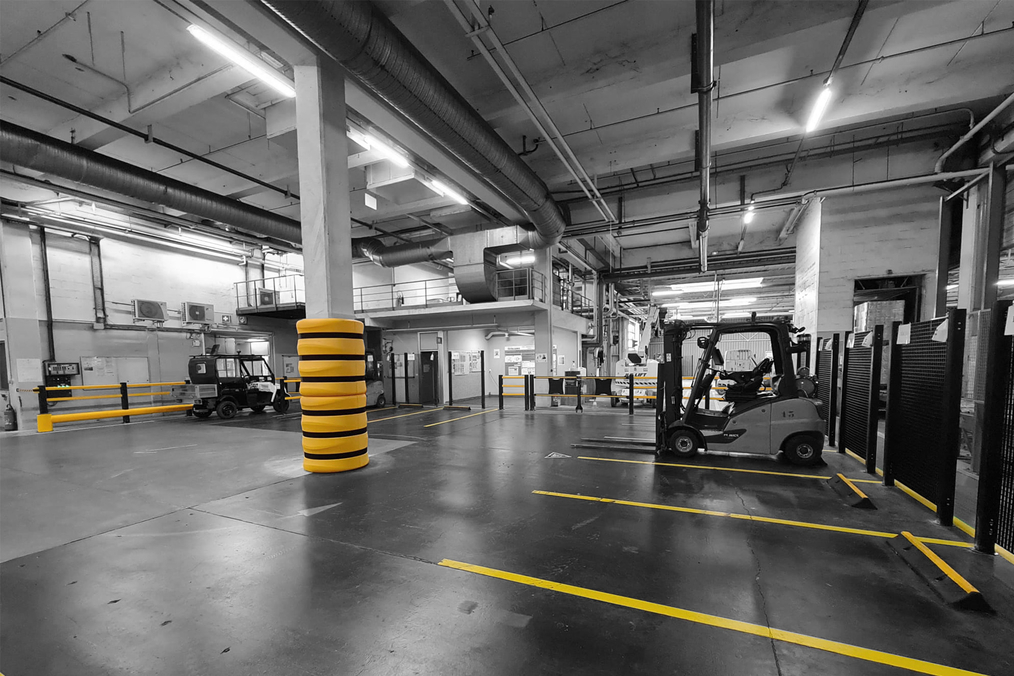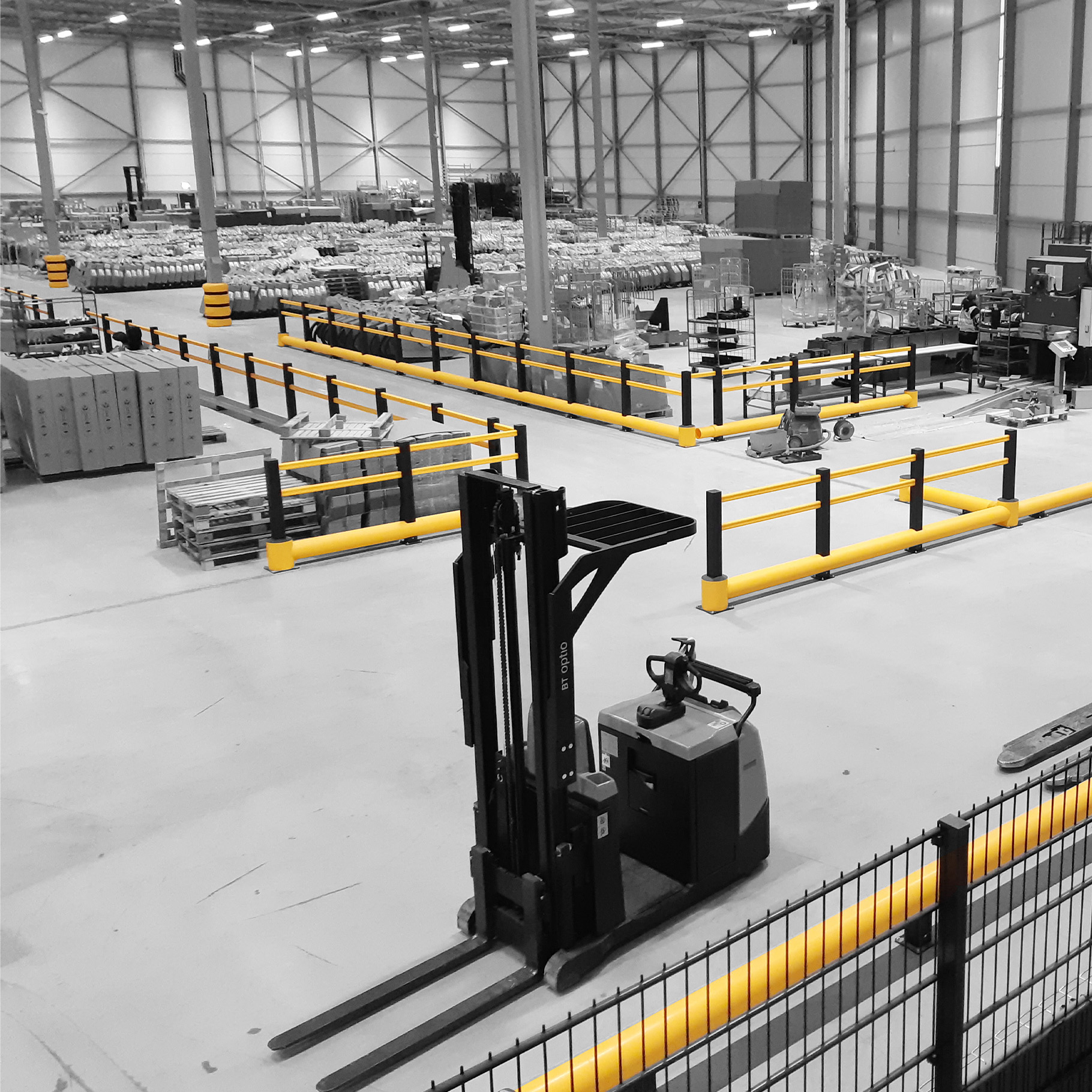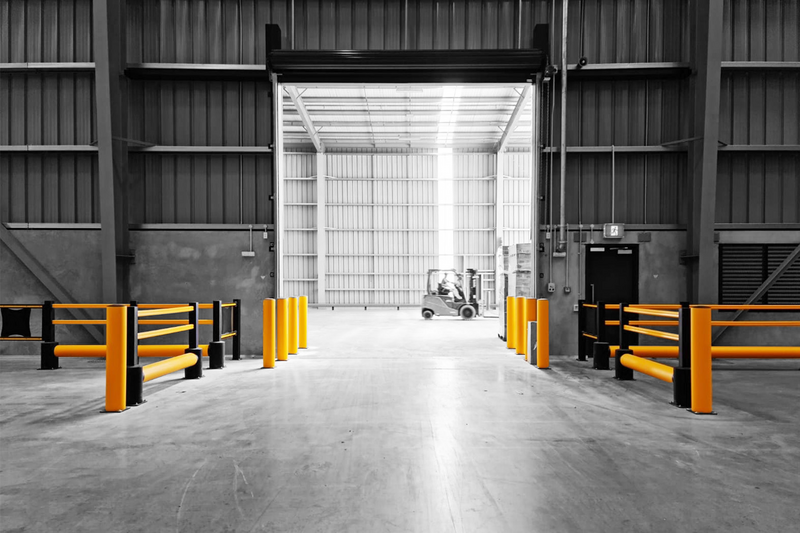Tips for delivering an engaging workplace safety presentation
Whether you're an employer, safety manager, or foreman, you have a significant responsibility. A safe workplace benefits both employees and the company! As an employer, you begin by conducting a risk assessment and creating a traffic plan. However, everything ultimately depends on communication. After all, safety is most effective when everyone in the company is aware of it. So, what’s the best way to accomplish this? Your communication strategy must include a safety presentation. Here are tips for creating an engaging presentation.

Why deliver a presentation on workplace safety?
Training significantly impacts employees' safety behavior. Companies frequently hire external firms to provide additional workplace safety training. This is a good idea, but it rarely includes every employee. Don’t you think all employees need to be aware of workplace safety regulations? Absolutely!
Besides external training, all employees need in-house presentations on workplace safety. This presentation clarifies the company's safety policy and highlights the importance of safety. The safety presentation must be a mandatory part of the onboarding process for new hires. Once the presentation is created, simply update it as needed.
HOW TO BEGIN
ANNOUNCE YOUR PRESENTATION ENTHUSIASTICALLY
Let’s face it: People are rarely excited to attend presentations. It's essential to emphasize the importance of a workplace safety presentation. Complement this with practical information and a bit of humor. For instance, when announcing the presentation via email or newsletter, include the program. A witty comment, silly pun, or funny image captures people's attention and prevents the presentation from being a dull exposition of facts.
CUSTOMIZE THE PRESENTATION FOR YOUR AUDIENCE
While workplace safety is crucial for both employers and employees, each has their own perspective on the matter. Therefore, it’s important to deliver a presentation that engages both workers and management. You can achieve this by providing information relevant to each group. So, customize your presentation to fit your audience.
Workers
A practical approach is most effective for workers. While figures and statistics highlight ongoing risks, concrete tips and advice are more valuable. Besides general safety regulations, be sure to include company-specific safety tips. For example, a general regulation might be: all traffic flows are segregated. However, specific safety tips about particular machinery are more engaging for workers. A surface-level presentation isn’t as compelling as one that directly addresses the workers' roles.
Management
Managers are less interested in practical details since they don’t operate vehicles, machines, or tools. For management, the financial and legal aspects add value to your presentation.
Workplace accidents always result in additional costs: repairs to infrastructure, machinery, or vehicles, as well as loss of goods and production or delivery time. These costs can escalate quickly! And this is just material damage. Imagine if someone is seriously injured or, worse, killed in a workplace accident. This profoundly affects the entire organization. Beyond legal consequences and compensation, it negatively impacts the company’s image and work environment.
Scenarios like these make managers uncomfortable. Use them to underscore the importance of a safe working environment. No one anticipates accidents until they occur. Thus: prevention is better than cure. Convince management to prioritize safety, always and everywhere.
VIDEOS AND TESTIMONIALS
The content of your workplace safety presentation is crucial for audience engagement. While the topic of safety is vital, it isn’t the most light-hearted subject. But that doesn’t mean it has to be dull. Deliver your message in an engaging and fun manner. Link text to visuals and use captivating visual effects whenever possible. In short, present workplace hazards effectively and creatively. For example, illustrate workplace hazards with videos. Studies show that video messages stick with people longer.
For instance, a video of a workplace accident demonstrates how quickly disaster can strike. The videos don’t need to be shocking. The internet is full of videos showing forklifts knocking over stacking racks like dominoes, often without injuries. These types of videos leave an impact.
Testimonials from those who’ve experienced or survived industrial accidents leave a greater impression. They vividly illustrate the consequences of an unsafe workplace. Contributions from others also increase interaction in the presentation. Allow your audience to ask questions about the accident's circumstances, its impact on the company and employees, and its effect on the victim's life. This leads us to the next point: audience interaction.
MAKE ROOM FOR INTERACTION
Presentations are a two-way interaction. Your presentation is about your company’s story, but its success depends on audience interaction. That’s what engages people. A safety presentation is ineffective if its message doesn’t stick. Interaction is one way to ensure this.
Occasionally throw questions to the audience during your presentation. This gauges their existing knowledge and provides feedback on how your presentation is received. Reactions to photos or videos can spark conversations or even group discussions. This is how new insights are achieved. Even after the presentation, keep people engaged by occasionally posing a question or problem spontaneously. Or by organizing a brainstorming session on workplace safety. Conduct these in segments or with the entire group, depending on your company's size. If the company's safety policy is perfected as a team, employees are more likely to follow it.
BE READY FOR QUESTIONS
Certain presentation topics will prompt questions about the company, its operations, or specific activities. Ensure you are well-versed in various company departments and processes. Being well-prepared helps you provide accurate answers. The same goes for comments from the audience. Listen carefully and provide your honest perspective on the issue or observation. If the comment is valid, acknowledge it. If it is unjustified, correct it in a considerate manner.
If you don’t know the answer, resist the urge to respond. Say you’ll consult with the appropriate people and revisit the issue later. Avoid answering unless you are completely sure. People will notice your hesitation. This undermines your credibility and makes people take you less seriously. This affects the credibility of your argument.
Some additional practical tips
Check your technical equipment
Ensure all devices are working properly in advance: the projector, laptop, USB stick, microphone, etc. Have a backup plan in case any of these devices malfunction or fail.
Watch the time
You’re working with a live audience. This means you relinquish some control over timing. Account for this by adding contingency time to your presentation's estimated time frame. This depends on your audience size and the level of interaction. It’s a good idea to address questions and feedback after the session within your set time frame.
Stick to your plan
Don’t deviate during your presentation. Stick to your initial schedule and limit audience interaction during the session to stay on track. This keeps your audience fully engaged.
Conclude with the key takeaway
At the end of the session, your audience will be less focused than at the start. Conclude with a concise message summarizing the key points. Provide your audience with a quick recap of the main points.
Conclusion
Use these tips to increase your employees' awareness for a safer workplace. While awareness is crucial, it does not provide absolute protection. People make mistakes despite good intentions. In stressful situations, safety principles may be overlooked and forgotten when time is critical. Therefore, besides raising awareness, you must provide physical safety measures. This sends a strong message that workplace safety is crucial to you as an employer.
Not sure where to start? Let us help you choose the right safety solutions. From safety barriers and handrails to bollards, height restrictors, column protection, and rack protection.

